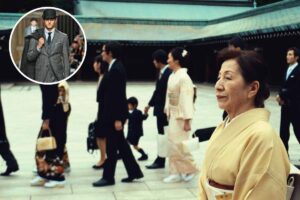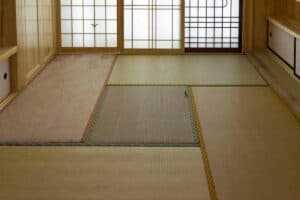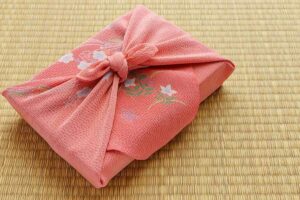Acer palmatum are trees commonly known as dwarf Japanese maple varieties, a favorite in many gardens around the world.
Their leaves are small with lobes that are deeply dissected.
There are lots of different dwarf Japanese maple varieties and we’ll cover 12 different ones in this article.
Table of Contents
1. Inaba Shidare Japanese Maple
Of all the dwarf Japanese maple varieties, the Inaba Shidare is unique.
The leaves of this tree have five to seven lobes, which in turn have lots of cuts making them very patterned indeed.
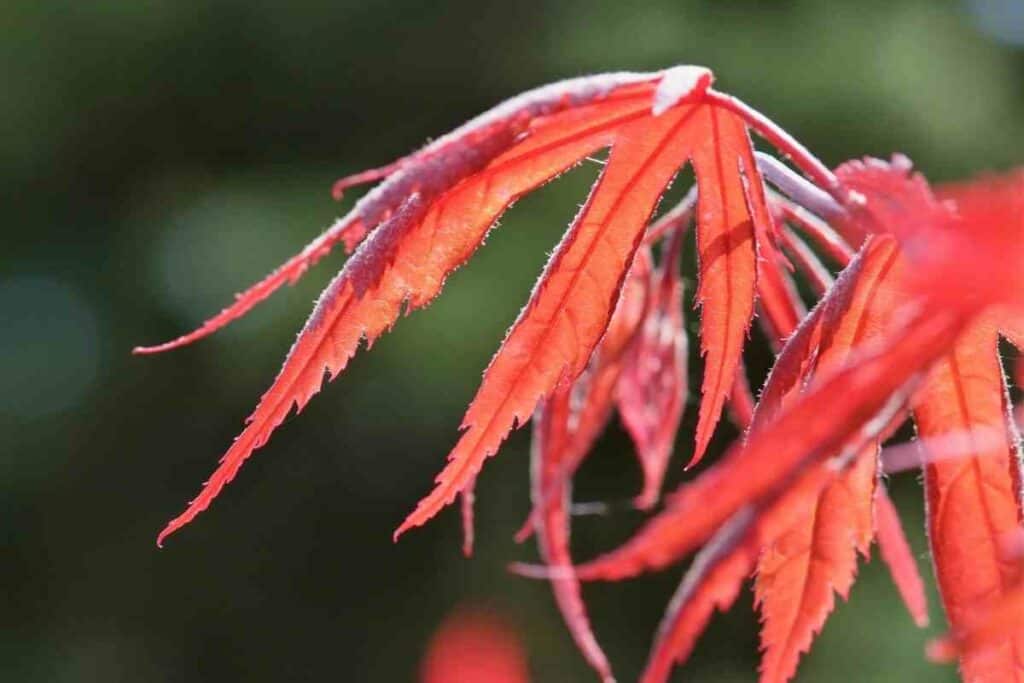
Color-wise, this tree has bright red leaves in spring, which shift towards a less-saturated burgundy in midsummer.
Before Fall – The leaves go to a green-red then return to being bright red in the fall.
This is classed as a dwarf Japanese maple tree because it rarely grows above five feet tall and typically is less than six feet in width.
As the tree grows, it takes on a crown whose younger branches sag downwards to the ground, forming a mushroom shape.
This is a hardy maple that will grow well in zones five to nine. It tolerates full sun and will also grow well in a container.
2. Tamukeyama Japanese Maple
This dwarf Japanese maple has lacy leaves with long lobes.
They’re one of the longest lobed leaves of all the dwarf Japanese maple varieties. Their leaves droop because of this, which creates a weeping effect.
After a decade, the tree might be over five feet tall and seven feet wide. It will have an umbrella-shaped crown and branches that cascade.
It is a dense maple with many leaves and from spring to fall, you won’t see many visible branches.
Leaf color is a dark red and unlike other dwarf maple varieties, you won’t get a bright red out of the Tamukeyama.
The seasonal changes go from deep red to deep maroon. This tree is hardy and can tolerate both hot and cold temperatures.
This is the best dwarf Japanese maple variety to put in full sun and it grows well in zones five to nine.
3. Waterfall Dwarf Japanese Maple
This maple is a weeping green. When their leaves first unfold in spring, they are light green.
As they mature, they darken and become a richer green. Towards fall, these leaves turn yellow before turning orange at the end of fall.
This is one of the smallest dwarf Japanese maple varieties.
After Twelve Years – It won’t be over four feet in height, though it can be six feet wide or more.
The crown is an umbrella shape and much more regular. As the tree ages, branches are longer and will droop.
This variety grows well in semi-shade and full sun.
Unlike the previous two varieties, this isn’t recommended for zone nine as there is too much sun, but it’s great in zones five to eight.
4. Red Select Japanese Maple
The Red Select is a weeping maple, which is frequently compared (and confused with) Inaba Shidare.
Red Select is an Inaba Shidare seedling and has smaller leaves.
At maturity, its leaves have a bright red color with a cherry tint. In the fall, these turn fiery.
After ten to fifteen years, the Red Select will be between four and five feet tall and won’t be wider than seven feet.
As the tree ages, its branches grow sideways then droop.
This tree grows well in zones five to nine and can tolerate both semi-shade and full sun.
Keep In Mind: It’s also easily grown in a container. Though not drought-tolerant, it doesn’t need much water.
5. Orangeola Japanese Maple
This dwarf Japanese maple is one of the smallest and only grows to a maximum height of five feet. It also doesn’t get more than four feet wide.
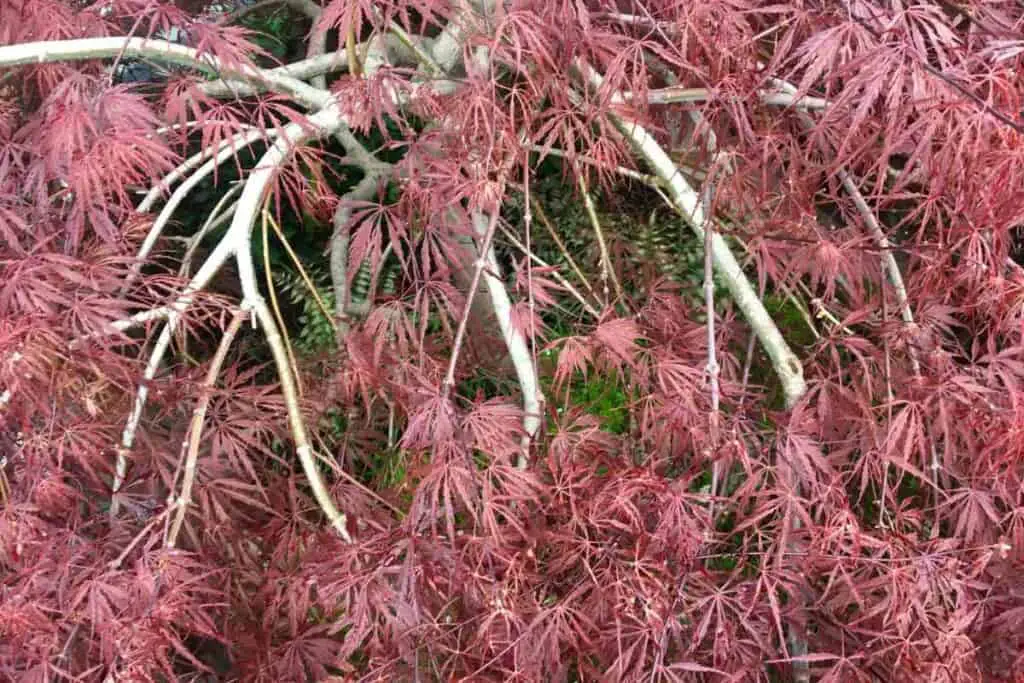
The shape of this variety is more like a pyramid than an umbrella so it’s easy to distinguish it.
At its full height, the branches start to droop, and a weeping effect is created.
The Orangeola’s leaves are lacy and thin. When young, they’re a bright red color but they become more orange as they mature.
Eventually – They’ll have a greenish orange tint. Young leaves continue to grow all season, which makes for a really colorful tree. This tree can be grown in zones five to nine but would need shade in zone nine.
6. Crimson Queen Maple
This variety of dwarf Japanese maples was actually created in New Jersey, USA.
When it has been growing for a decade, it won’t be over four feet in height and six feet in width.
When it is young, the Crimson Queen grows a lot of lateral branches. These start to sag immediately, which creates a weeping maple shape from a young age.
As its name suggests, the leaves of the Crimson Queen are dark red to maroon but unlike other maple varieties, the color barely changes.
This maple doesn’t tolerate full sun as its leaves become pale, so it’s best planted in shady areas that have a little sun.
7. Red Dragon Dwarf Japanese Maple
This is an interesting tree and aptly named since its leave look like the silhouette of a dragon.
They are burgundy with a bright red lower part, which means they have a two-tone effect that looks great when it’s windy.
This tree will grow to a maximum height of five feet and won’t be wider than five feet either.
The many young branches and thin leaves create a weeping tree, and since its annual growth is low, it doesn’t require pruning.
Like the majority of dwarf Japanese maple varieties, the Red Dragon can tolerate full sun and be planted in zones five to nine.
Though in zone nine, it will need a little shade, so the leaves don’t lose color.
8. Red Filigree Japanese Maple
This is an Italian selection of Japanese maple and is unique in appearance.
It has very thin, small leaves that are unique to this variety.
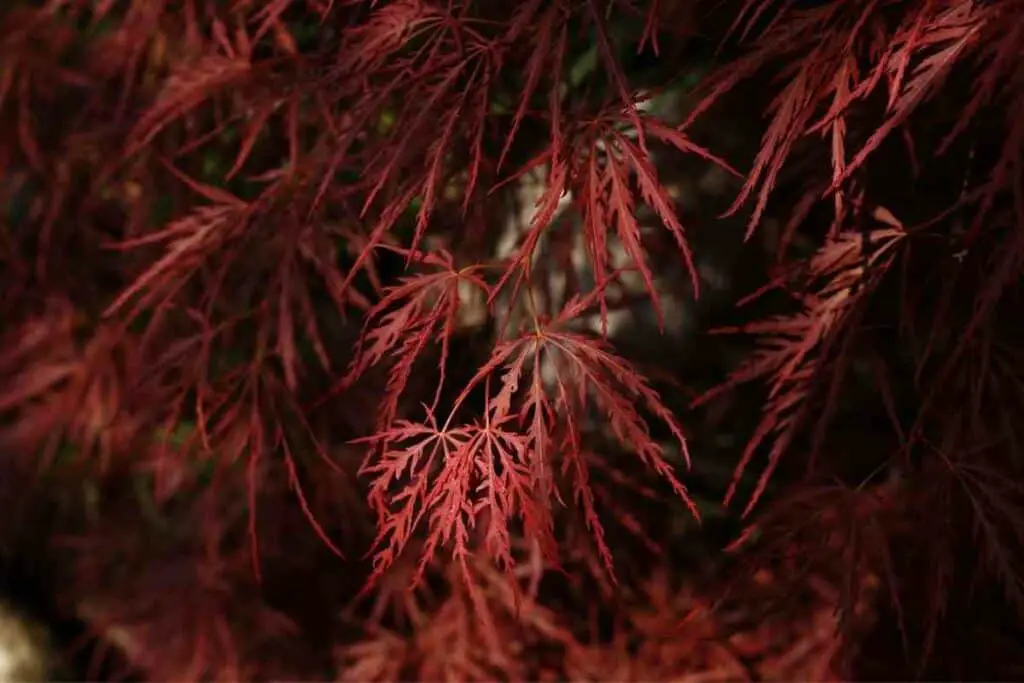
Color-wise, they are burgundy and this doesn’t change all season.
This variety is distinctive because it can tolerate deep shade and the color or shape of its leaves won’t alter.
Thus, if you want a dwarf Japanese maple for a shady spot, this could be the best choice.
It is also a miniature variety and won’t be more than four feet high and wide after a decade of growth.
This will grow will in penumbra or shade in zones five to nine.
9. Victoria’s Red Sensation Maple
This variety has bright red leaves that become greenish-brown by July and turn back bright red in fall.
At maturity, this tree grows up to four feet in height and five feet in width. Its branches eventually cascade, creating an umbrella shape.
When branches are young, they are green, which creates a nice contrast with the young red leaves. The weeping effect begins after around five to six years.
This tree copes with the frost in zone five as well as the heat in zone nine. It needs semi-shade or full sun.
10. Ever Red Japanese Dwarf Maple
This dwarf weeping maple has bright red leaves all season, hence its name.
After a decade, it will be around five feet tall and no more than six feet wide, which makes it great for containers.
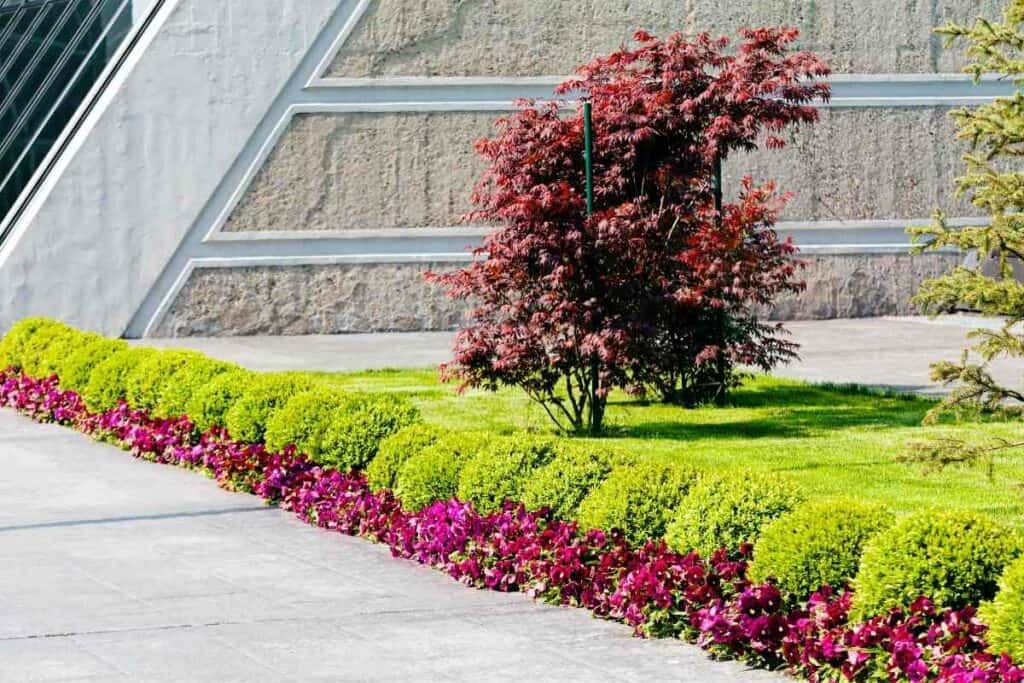
The crown has a mushroom shape and doesn’t require any pruning.
This is a hardy variety of Japanese maple and grows well in zones five to nine. In the north, you need full sun ideally, while in the south, partial shade is best.
During Its First Year – You’ll need to water the Ever Red regularly. After rooting, you don’t need to water it so much.
11. Octopus Japanese Dwarf Maple
With gorgeous, young red leaves, you’ll see a little paleness in summer but then a bright red again in autumn.
This is a very compact tree, which won’t grow beyond four feet typically.
Its width can be six feet plus so it can end up half as tall as it is wide. The crown is a wide umbrella shape and its branches cascade.
As with most dwarf Japanese maple varieties, it grows well in zones five to nine but would have pale leaves if it is in full sunlight in zones eight to nine.
Mulching also provides good results.
12. Chika Japanese Dwarf Maple
This is a beautiful Japanese-bred maple that belongs to green, weeping maple varieties.
In spring, the leaves are bright green and turn less bright and slightly darker in the summer months.
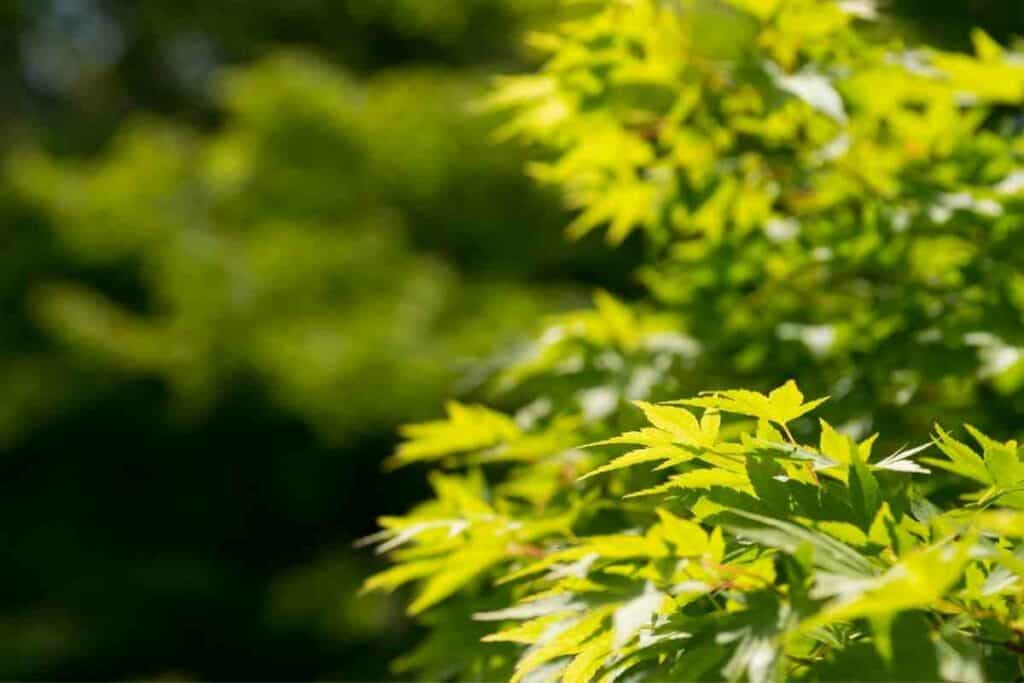
This dwarf Japanese maple variety looks its best in fall when its leaves take on a yellow-orange color.
This is one of the bigger dwarf Japanese maple varieties and can reach eight feet tall.
Technically, therefore, it is a semi-dwarf tree, but you can still grow it easily in a smaller garden.
It’s easy to control its growth through pruning. However, you can’t really grow this variety in a container.
Final Thoughts
There are so many dwarf Japanese maple varieties that it makes choosing one for your garden difficult.
When deciding which to go for, consider the following:
- Where they grow best
- Whether they need some shade
- The color of their leaves all season
- The shape they take on
- Their mature size
Once you’ve decided your preferences, it makes choosing the right tree much easier!
Read Next
- Best Japanese Knives Top Picks for Every Kitchen
- Japan’s Bold New Trend: Dressing Like a British Gentleman (or at Least Trying)
- 7 Best Japanese Sunscreen Products You Can Buy Online
- 5 Best Japanese Makeup Brushes for a Flawless Finish
- 7 Benefits Of Tatami Mats You Should Know
- The Best Furoshiki Wrapping Cloths: Inspiration, Ideas & Cloths You Can Buy


